Africa Projects – Uganda & Somaliland
Wednesday, 10 August 2022My recent Africa travels to Uganda, Somaliland and Djibouti was really straightforward tourism, three interesting countries I had never been to before. But I also squeezed in several days of ‘project,’ visiting projects the Planet Wheeler Foundation had supported, or Global Heritage Fund’s archaeological sites, or one project – cheetahs in Somaliland – which I simply stumbled upon.
The Ntebe za Mugula Cave in Uganda
Rising water levels are a problem in a number of locations in Uganda including around Lake Victoria – Uganda, Kenya and Tanzania all have shorelines on the lake. It took a little negotiating with police and military guards to reach this lakeside site since it’s close to the Entebbe Airport runway. Plus there’s some Chinese warehouse construction to be transited.
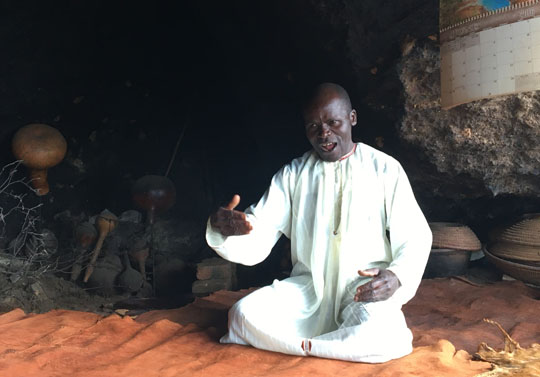 ▲ The Ntebe za Mugula Cave or ‘seat carved from the rock’ is a site with some religious and/or regal significance and there’s a holy man-spokesman in residence who had just been imparting his wisdom to a small group of acolytes when I turned up. He was delighted to educate me as well, which he did at some length. Over the next couple of weeks as I travelled around Uganda I discovered a lot more about Ugandan kingdoms, but initially a lot of it went right over my head.
▲ The Ntebe za Mugula Cave or ‘seat carved from the rock’ is a site with some religious and/or regal significance and there’s a holy man-spokesman in residence who had just been imparting his wisdom to a small group of acolytes when I turned up. He was delighted to educate me as well, which he did at some length. Over the next couple of weeks as I travelled around Uganda I discovered a lot more about Ugandan kingdoms, but initially a lot of it went right over my head.
I heard about the mudfish clan which has some significance here, perhaps they own the place? About the 36 kings – are they the ‘mugula’ although kings also seem to be referred to as Kabaka – and how they were at one time enthroned on an island we could see just offshore, but now it happens right here in the cave. And, he seemed to say, the ‘seat’ definition referred to him directly rather than any physical rock ‘seat,’ rather like he’s the chair of the company? Now what was it that was black, spotted or white? There was also something about nine days of fasting and then returning to the cave and only eating certain foods. By now he was in full swing and would have told me a lot more if I had time to stay and listen!
FREO2 Oxygen
The Planet Wheeler Foundation was an early supporter of Professor Roger Rassool’s FREO2 project at Melbourne University in Australia. If you check their website we’re up towards the top, not because we’re the biggest donor (FREO2’s success has attracted some big names, I’m sure Bill Gates is well ahead of us), but we were first.
African children may face lots of health challenges, but pneumonia is the single largest killer of children under the age of 5 worldwide and often that threat can be countered with one single simple solution: oxygen. During the Covid pandemic we’ve certainly learnt how vital oxygen can be to people with respiratory problems. In many places in the world, Africa in particular, electrical problems – blackouts, irregular supply, voltage fluctuations – can make dependable oxygen a scarce commodity. Check this short video which underlines why oxygen can be so vital for small children.
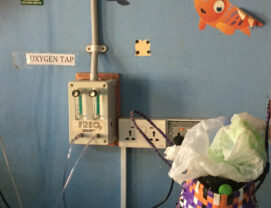 ◄ The FREO2 oxygen tap in a Mbarara Hospital ward
◄ The FREO2 oxygen tap in a Mbarara Hospital ward
FRE02’s mission is to make oxygen delivery more reliable and more economical, to devise ways of storing oxygen when the power fails and even to generate oxygen when there is no electricity at all.
They now employ 11 staff in Uganda and Tanzania, supports 34 Health Centres and Hospitals and have trained more than 550 Health Workers in the diagnosis and safe administration of oxygen.
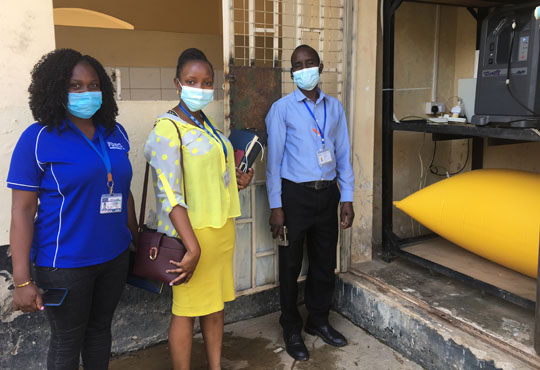 ▲ Aminah, Sheillah and Patrick, FREO2’s techie at the Mbarara Hospital
▲ Aminah, Sheillah and Patrick, FREO2’s techie at the Mbarara Hospital
I travelled to Mbarara, a major centre on the main road west from Kampala, and met up with the FREO2 duo – Sheillah Bagayana and Aminah Nanyondo to tour the Mbarara Referral Hospital. It was crowded, confused and somewhat chaotic and I wished I had my sister Coleen Supple, a retired midwife, with me to ask the relevant questions. The hospital is headed up by Dr Celestine Barigye who went to Melbourne University and has played a major part in unrolling FREO2 in Uganda.
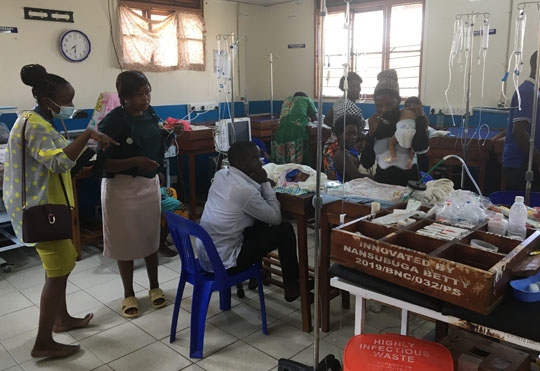 ▲ The Mbarara Hospital neonate (new born) ward
▲ The Mbarara Hospital neonate (new born) ward
I met Sister Addy, head of nursing paediatrics inthe Toto Ward, and Dr Uchama, head of the neo-natal ward which had 20+ babies and looked particularly overworked. Patrick, the FREO2 tech and on top of everything technical, also showed me around and we also visited a malnutrition ward with hungry babies and an oncology ward. Confused or not there was definitely an enormous enthusiasm for the impact FREO2 has had. Sheillah recounted a night on a neonatal ward in Kampala the capital when there were serious blackouts and power outages all night long. During the night 15 babies were admitted, in the morning three were still alive. This would not be the case if FREO2 had been available she insisted.
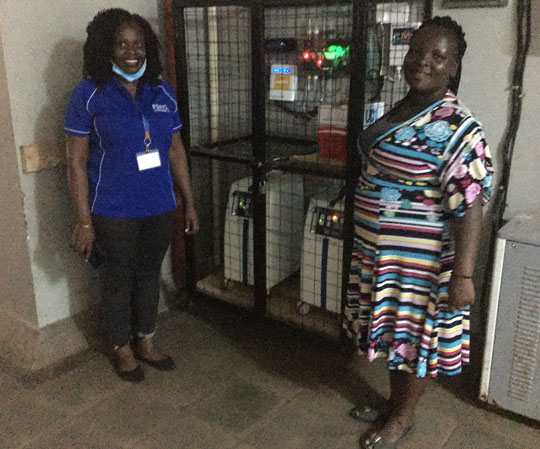 ▲ FREO2 equipment in the Itojo Hospital
▲ FREO2 equipment in the Itojo Hospital
From the big hospital in Mbarara I continued 50km down the road to a smaller regional hospital at Itojo. I had been warned that the local hospitals – like Itojo – would have far less expertise than a major referral hospital like Mbarara. In fact the Itojo Hospital was much quieter, much less crowded and generally appeared far more orderly and less hectic than Mbarara! The key numbers I was quoted there were that they typically got 50 to 60 neonates (new born babies) brought in each month. Of course these new births are only going to turn up if they’re in trouble. In the last month the key figures were 54 2 2 – 54 arrivals, 2 sent on to the big Mbarara Referral Hospital and 2 died. The previous month the figures were 63 0 0. Before they had access to FREO2, they insisted, they would all have been referred to Mbarara. Or they’d be dead.
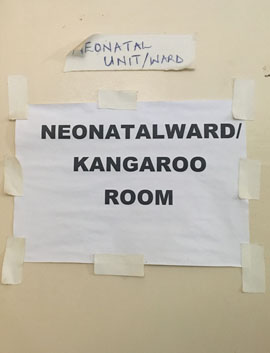 ◄ Even more so than at Mbarara they come across as real FREO2 enthusiasts. It genuinely seems to have made a major difference and if I felt that FREO2 was my baby I’d have been getting a serious case of swollen head. The Itojo techie is even more of an enthusiast and can’t stop talking about what a difference it has made. How could things be improved even more at Itojo? Make the wards warmer, so the babies don’t get chilled. Well that is the last thing I’d have expected in Africa. We note a ‘kangaroo ward,’ where babies are bundled up against their mothers to keep them warm.
◄ Even more so than at Mbarara they come across as real FREO2 enthusiasts. It genuinely seems to have made a major difference and if I felt that FREO2 was my baby I’d have been getting a serious case of swollen head. The Itojo techie is even more of an enthusiast and can’t stop talking about what a difference it has made. How could things be improved even more at Itojo? Make the wards warmer, so the babies don’t get chilled. Well that is the last thing I’d have expected in Africa. We note a ‘kangaroo ward,’ where babies are bundled up against their mothers to keep them warm.
The Abaarso School
In Somaliland I visited the Abaarso School – or more completely the Abaarso School of Science & Technology – another project we’ve been working with for quite a few years. Set up by Jonathan Starr, a wealthy American techie, his idea, neatly explained in this clip from the 60 Minutes programme, was to establish a school based on American curriculum which would turn out graduates capable of getting into overseas universities. It has certainly succeeded.
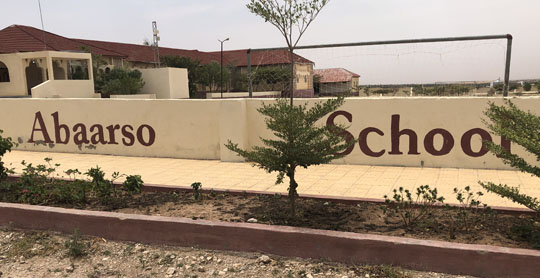
The school has about 280 students at their campus, about 25km west of Hargeisa, and does not plan to grow any larger. The big effort today is going in to the Kaabe primary school expansion. As well as primary schools in Hargeisa they will also soon have one at Berbera, funded by the Dubai Ports project. There’s also the Barwaaqo women’s university project
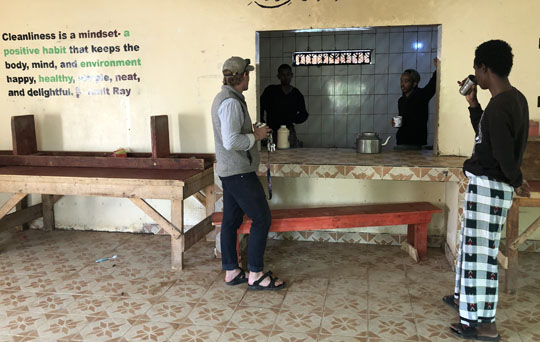 ▲ In the Abaarso dining room
▲ In the Abaarso dining room
It was out of term time during my visit to Somaliland, but I went out to the school with Harry Lee, who runs the Abaarso school today, and Brendan Coyne, a first year – and only year – American teacher showed me around. He was enthusiastic, but realistic. Assorted thoughts:
• There’s strict gender separation. If they’re in the same class the male and female students sit on opposite sides of the classrooms. The dormitories are at opposite ends of the walled in (and barbwired) school grounds. The girls’ sports grounds have high walls so they can’t be seen. The opposite sexes are not allowed to talk to each other, unless they’re siblings. Music cannot be played when both sexes can hear it. Etc!
• The classrooms, labs, library and so on are all as you’d expect. The boys’ dorm rooms are decidedly basic, four beds and nothing else. Not that clean or tidy either (although there was nobody in residence of course).
• Keeping the teacher balance is important, you need enough female teachers to supervise the girls for example.
The night before I visited the school I went out to dinner in Hargeisa with Harry Lee and four Abaarso graduates. Nimo is the first Abaarso graduate to get a US university place, she’s now working for the Somaliland government, Qadan is now working with the Abaarso group and their Kaabe primary school expansion. Hodo is with the Barwaaqo women’s university project. Muse, the one male in this student group, is about to head off to Scotland to Stirling University. At first all their successful university applicants went to US universities, now it’s more international including universities in Africa. The US universities may be much more expensive, but there are also far more scholarships available.
Cheetah Conservation Fund
Who knew Somaliland had cheetahs? The Namibia-based Cheetah Conservation Fund was looking after 87 cheetahs in three compounds in Hargeisa, out towards the airport. From Somaliland baby cheetahs are grabbed from their dens, shipped to Yemen and smuggled into Saudi Arabia or United Arab Emirates to be sold as pets. Cheetahs don’t emerge from their dens until they are 4 months old and stay with their mothers until they are 2 years old. Poachers often steal cheetahs which are only one month old. When the cheetah fund rescues them they are generally suffering from malnutrition and dehydration and from shock, many of them don’t survive even after they are rescued. They’re working on building a large reserve for them outside Hargeisa, but sadly they’re never going back to the wild. I was shown around by Canadian vet and clearly cheetah enthusiast Dr Ashley Marshall.
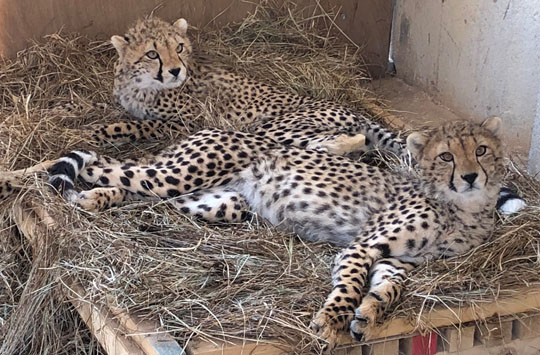 Cheetahs, the Somaliland sub-species, reach 20 to 30kg. They’re cat-like, but with a bit of dog in them, but unlike domestic cats they cannot retract their claws and they’re not going to house train. Doesn’t sound like the ideal pet to me? They are, however, the most tractable of the big cats and it’s amazing how walking around their sites they all just track you all the time and some of them seem quite friendly, pushing up against the wire to reach you. Looking after 87 cheetahs is clearly not cheap, they get through seven camels (US$800 to 1000 each, I’d just visited the livestock market) a week plus lots of goat legs. The fine if you’re caught cheetah smuggling? Perhaps three or four million Somaliland shillings – less than US$1000 and the sort of people involved in cheetah smuggling can probably get away with it.
Cheetahs, the Somaliland sub-species, reach 20 to 30kg. They’re cat-like, but with a bit of dog in them, but unlike domestic cats they cannot retract their claws and they’re not going to house train. Doesn’t sound like the ideal pet to me? They are, however, the most tractable of the big cats and it’s amazing how walking around their sites they all just track you all the time and some of them seem quite friendly, pushing up against the wire to reach you. Looking after 87 cheetahs is clearly not cheap, they get through seven camels (US$800 to 1000 each, I’d just visited the livestock market) a week plus lots of goat legs. The fine if you’re caught cheetah smuggling? Perhaps three or four million Somaliland shillings – less than US$1000 and the sort of people involved in cheetah smuggling can probably get away with it.






